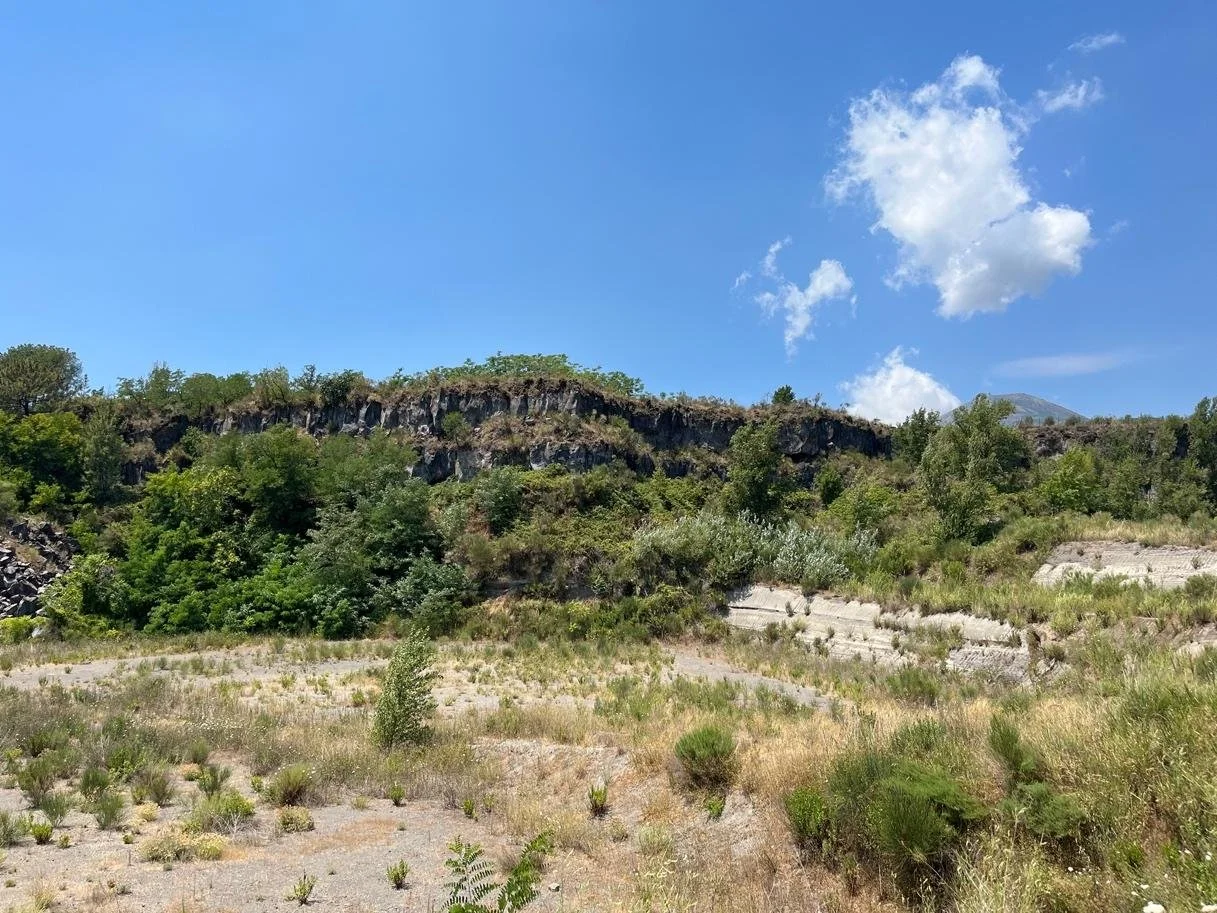Ecologies of Performance:
Multimodal Ethnographies of Environmental Violence and Embodied Resistance in Southern Italy
Principal Investigator: Jasmine Clotilde Pisapia
Ca’ Foscari University of Venice
Funding: Young Researchers (PNRR)
Project Duration: 36 months (15/05/2025 – 14/05/2028)
Keywords: environment, aesthetics, anthropology, performance, theater, images, toxicity
I am currently a Researcher at Ca’ Foscari University in Venice and Principal Investigator of the three-year project Ecologies of Performance: A Multimodal Ethnography of Environmental Violence and Embodied Resistance in the Land of Fires (2025–28). The project examines how environmental crisis is experienced and contested through the body, at the intersection of anthropology and the performing arts. The ethnography is set in Terzigno, on the slopes of Mount Vesuvius, where two overlapping disasters unfold on radically different timescales: toxic contamination and volcanic risk. Terzigno bears the traces of multiple “histories of fire,” from ancient eruptions to mafia-led waste burials that are often set alight. Around 2009–2010, the area became infamous as the Land of Fires when volcanic caves and private lands were used for illegal dumping, causing long-term health consequences and sparking grassroots resistance, especially among women. The project explores how residents narrate and embody life under geological threat, and how these narratives intersect with responses to industrial toxicity. It asks: How do communities in high-risk environments relate to nonhuman forces like volcanoes, and how do these forces entangle with the “slow violence” of contamination? The research answers these questions by exploring three main axes: (1) the temporality of slow, intergenerational toxicity versus that of catastrophic events; (2) media, techniques, and aesthetics in relation to the geological; and (3) social movements and the experiences of women in environmental politics in Italy.
Viewing social movements as embodied and collective, the research investigates theater as a space of reflection and resistance. Through collaboration with local activists, it develops performance as both ethnographic method and community practice. In 2023, I began working, together with women’s environmental groups Le Ginestre and New York playwright Richard Maxwell, on artistic research for a theater piece and mixed-media exhibition in Terzigno’s local Museo Emblema, which has included writing workshops and small-scale performances in community centers.
This research project and its multimodal constellation will result a second my second book project, tentatively entitled While You Were Asleep: Timescales of Disaster and the Everyday near Mount Vesuvius. Referring to the volcano’s dormant state, the book is an ethnographic meditation on the cross-scalar relations that emerge between geological formations, slow toxicity, and the eruption of social movements. Drawing on testimonies from activists, volcanologists, epidemiologists, local officials, performers, and residents, it traces how people live with macro- and micro-events in an unsettled environment.
The conceptual framework of this book project was developed, under the research theme “Scale,” during my 2024–25 fellowship at the Institute for Cultural Inquiry (ICI Berlin). There, I worked with philosophers, art historians, film theorists, physicians, and digital scholars. Methodologically, I am developing ethnographic parameters for the emerging field of “geoanthropology,” which is currently shaped by STS, history of science, and philosophy. This is the focus of my invited article, “The Open Underworld,” in the edited volume Geoanthropology: Metabolism, Legal Imagination, and Geopraxis edited by Justas Patkauskas, Pietro Omodeo, Xenia Chiaramonte, and Giovanni Fava. Springer, “Political Epistemology” series.
Preliminary References
Pisapia, Jasmine. “Vessel and Voice: Collaborative Theater-Making and In-Situ Creations in New York and Naples,” International workshop Images, Sound, and Performance as Ways of Knowing co-organized by Valentina Bonifacio and Lisa Stevenson, Ca’ Foscari University, Venice, 4-8 March 2024.
Pisapia, Jasmine and Valentina Bonifacio. “Of Fireworks and Fireflies: Apotropaic Performances in Anthropology,” introduction to the Italian translation of Michael Taussig, Mastery of Non Mastery in the Age of Meltdown: Michael Taussig, L’arte del non-dominio nell’era dello sfaldamento globale, trans. Michele Bandiera and Enrico Milazzo for the colletivo epidemia (Milano: Meltemi, 2023).
Pisapia, Jasmine, and Isabella Mongelli. “Per un’antropologia estetica della crisi ecologica: Teatro, arti visive, e ‘crisi della presenza’ nella città di Taranto.” Antropologia 9, no. 3 (2022), 111-132.
